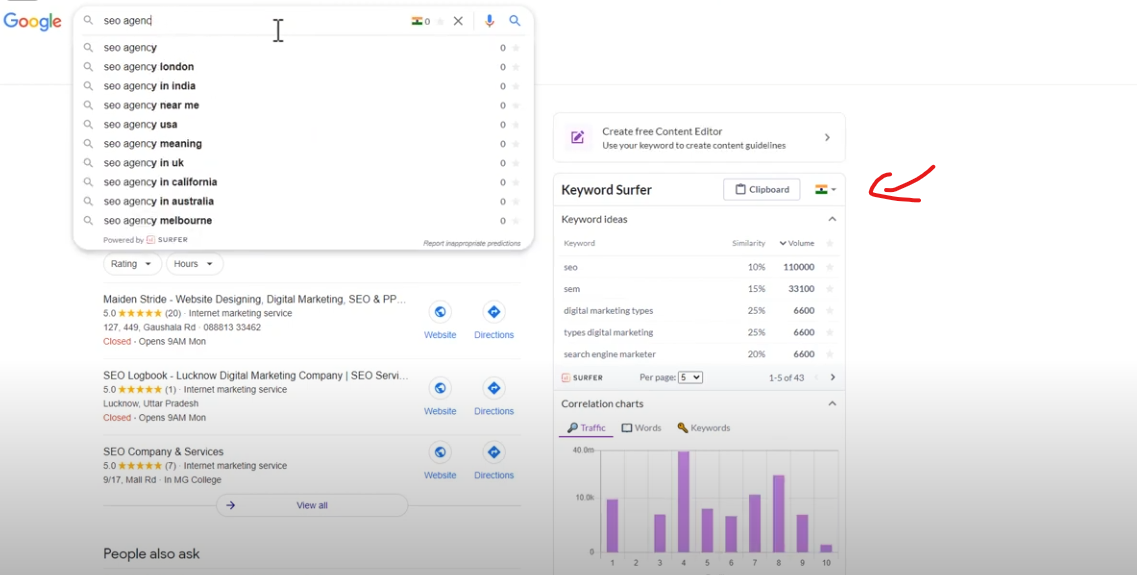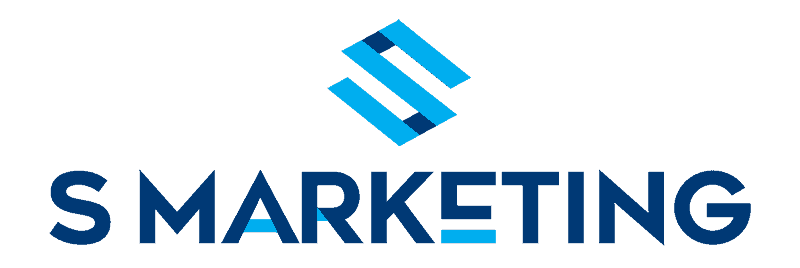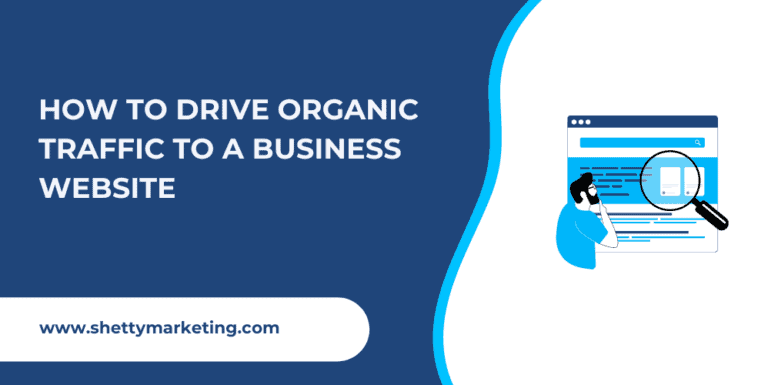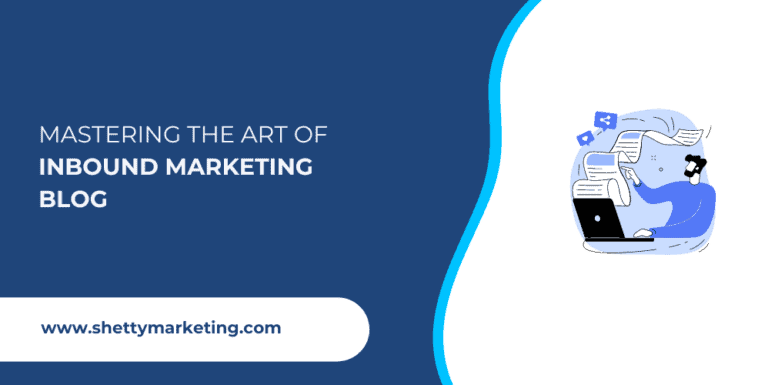To drive organic traffic to your business website, you should do the following:
- Extract keywords from your competitor’s website
- Build a topical map out of those keywords
- Create content on those topics and optimize it for the search engine
- Content marketing (through backlinks)
The above search engine optimization activities don’t need to be expensive.
That’s right! You can improve the search engine rankings and increase organic traffic without breaking the bank.
In this blog post, I’ll be walking you through all the above strategies in detail.
By the end of this article, you’ll have a clear roadmap that you can follow to increase website traffic to your business website and reach your objectives.
Phase 1: Keyword research (Drive organic traffic to your site with the help of your competitors)
First things first. Find the RIGHT keywords for your business
For that, you need to have a good understanding of your potential customers and what they are searching for.
Start by finding a competitor website that your potential customers frequently visit and extract the queries through which their website is getting search engine visibility.
You can do that using a free keyword research tool called Keyword Planner from Google.

All you need to do is log in to keyword planner using your Google account. From there, it’s easy to navigate around the interface. Nevertheless, refer to the GIF above for instructions. Enter the competitor’s domain link in the search bar and see what keywords they are ranking for.
Sift through the keywords and see which ones are suitable for your website. You should be able to find enough keyword ideas that would match the blog topics you want to write on and the product or service pages you want to create.
However, if you want to find more keyword ideas, use the free keyword research Chrome extension from Surfer SEO.
Enter one of the keywords discovered during competitor research on the Google search engine and the keyword ideas will be displayed on the right side of the search results page.

Following the above method you should have enough keywords that you can write content on.
To ensure that you create relevant content, understand your target audience’s search intent.
Ask yourself:
- Why are they searching for this keyword?
- What do they hope to achieve by searching for it?
- Is it to find a solution to a problem or to gain knowledge about a particular topic?
Once you understand your target audience’s search intent, focus on creating valuable content that meets their needs.
To do that, you need to create content for informational keywords and commercial keywords.
Informational keywords are usually long-tail keywords that are entered by potential customers to find answers to a question. Creating content on these keywords can help you rank at the top of the search results page and also in the “people also ask” section. (EG: How to manage Golden Retriever hair)
On the other hand, commercial keywords are entered by prospects who are in a position to buy products or services from you. It’s usually hard to rank for commercial keywords because of the competition. After all, it is where the money is. Most small businesses even invest in Google ads, Bing ads, and other PPC (paid ads) channels to rank for these keywords. (EG: Golden Retriever collars)
Once you create content based on the keywords, your next step should be building solid topical authority and a healthy backlink profile to rank for these keywords.
Phase 2: Topical Mapping ( Drive traffic to your website with topical authority)
The structure of your site is just as important as keyword research. Not many people know that.
You don’t have to take my word for it. Google themselves say it in their guidelines.
But what exactly is Topical mapping?
Essentially, it is a detailed breakdown of the topics and subtopics that your website covers. It’s important because search engines like Google use your website’s topical authority to determine the subject matter expertise of a website owner/business and how relevant it is to a particular subject or query.
For instance, going back to the Golden Retriever Life website example. The topical map of the website would look something like this :

Therefore, it is important to take some time to group the keywords according to the topic and build a logical map out of it. To create a logical map, as seen in the image above, build a hierarchical structure for your website that’s easy to navigate.
It doesn’t end there. Did you notice the arrows I have added? It signifies internal linking. Internal linking helps users and search engines to understand the relationships between different topics and subtopics on your site. Not only that, even your users would find it useful to navigate around interrelated topics.
So, as you create new content for your website, be sure to link it back to relevant pages and posts within your site.
Now that you understand different kinds of keywords and how to build a topical map, you should be able to create content and optimize it for the search engine.
Phase 3: How to optimize your website to increase organic traffic
When optimizing content, it’s important to include the keywords that are commonly found in the top 10 pages of the search engine results page (SERP).
Why is that?
That’s how Google search bots determine if you’re addressing the same topics as your competitors.By including relevant keywords in important areas of your site, like your URL, meta title, and H1 tag, you can signal to search engines what your site is all about. And that’s crucial for ranking higher in search results pages.
Weave those relevant keywords into your content where appropriate.
That being said, don’t compromise the quality of the content for optimization. In the end, the users will need to find your content insightful and useful for them to convert to clients.
I use Frase to optimize the content with relevant topics.

You probably:“But what about keywords?”
When you write about common topics covered by your competitors, you will also be able to use the common keywords that are used on their websites. Additionally, writing with the audience in mind allows you to prioritize creating valuable content for readers rather than solely focusing on search engine optimization.
Call it “killing two birds with one stone” if you will 😉 But most content optimization tools like Frase are paid. Fortunately, you can use a Free content optimization tool called Text Optimizer to optimize your content.

The tool is user-friendly and easy to navigate. Simply sign up for it using a Google or Bing account. After signing up, you can begin the optimization process by selecting the focus keyword (search query) and the location. In the next step, it will ask you for the content that you want to optimize. Simply paste the content, and in the next step, it will generate the keywords you need to use to rank on the front page of Google. Alternatively, you can install a Chrome extension to optimize your content as you write it.
By creating valuable content optimized for relevant keywords using top-notch SEO tools, you’ll be well on your way to climbing the search rankings and driving more business to your site.
Phase 4: Drive website traffic with backlinks
Link building remains a crucial component of a successful SEO strategy for businesses, and will remain so.
In simple terms, link building refers to the process of acquiring hyperlinks from other websites to your own. These backlinks act as signals to search engines, indicating the authority of your website in the SEO space.
Why?
When other high-authority websites link to your content, search engines view it as a vote of confidence, which can improve your search rankings and drive organic traffic to your website
Related: How much business is driven by organic traffic (Is it worth it?)
Link Building Strategy #1: HARO (Help a Reporter Out)
One way to build links that can increase your authority and help you rank higher on search engines is through HARO, or Help A Reporter Out. HARO is a free service that connects journalists with sources and experts, and it’s a fantastic tool for local businesses looking to get mentions and links from high-authority sites.
By registering as a source on the platform, you’ll receive daily emails with queries from reporters in your industry, and you can respond with your expert opinions or insights.
If a journalist decides to use your input, you’ll get a backlink from their article, which can increase your website’s authority and drive organic traffic to your site.
Link Building Strategy #2: Broken Link Building
Another effective link-building strategy is broken link building, which involves finding broken links on high-authority websites and replacing them with links to your website.
By doing this, you’re providing value to the website owner by helping them improve their user experience, and you’re also gaining a backlink that can boost your search engine rankings.
To find broken links on websites in your industry, you can use SEO tools like Ahrefs or SemRush and enter the URL of a high-authority site.
The tool will reveal any broken links on the site, and you can reach out to the website owner and suggest replacing the broken link with a link to your website.
Link Building Strategy #3: Link building through Influencers
Finally, collaborating with influencers in your industry is an excellent way to gain high-quality backlinks and increase your website’s authority.
Influencers have established themselves as experts in your industry and have a following that trusts their recommendations. By collaborating with them and creating valuable content together, you can tap into their audience and gain backlinks to your site.
In conclusion, link building is a crucial aspect of your SEO strategy, and by using techniques such as HARO, broken link Building, and collaborating with influencers, you can gain high-quality backlinks and establish your website as an authority in your industry. So start building those links and watch your traffic and rankings soar!
Phase 5: Measure the organic traffic to your website
You can measure the organic traffic to your website using a search console
The main purpose of this free Google tool enable you to see keywords that are driving traffic to your site, their average positions on the search results page, the clicks the organic search results get, and the pages that are driving the most traffic.
The “indexing” section helps you understand whether your pages are being crawled and indexed by Google search engine bots. Your pages must be indexed by Google for them to rank on the results page. The least you can do to make sure the pages get crawled and indexed by Google is to submit the sitemap.
To check whether a specific page is indexed or not, you can go to “URL Inspection” copy-paste your page URL into the search bar, and hit enter. In a few seconds, Google will let you know whether the page has been indexed (Check the GIF above). If you don’t see a green tick mark, then click on “Request indexing” so that Google can crawl the page URL and index it.
In the experience section, you should make sure that your page experience and Core Web vitals are in good condition. These two factors play a pivotal in search rankings
Final Say
There you go, 4 phases you have to go through to drive organic traffic to your website. The 5th phase is to measure the performance of your website on the organic search results page.
I hope this post can help you to incorporate the right organic marketing strategy to get results. If this is too much work for you, you can hire an SEO expert. For more information about that, you can refer to my post :
Read more: How to find a good SEO expert ( and how to avoid bad ones)





